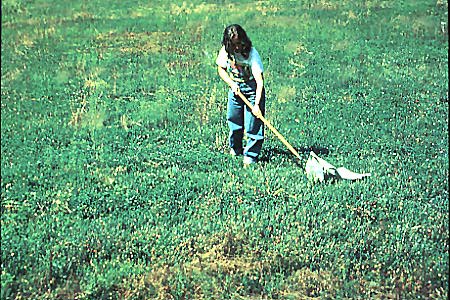
Scouting a Cranberry Bog
Jessica Metzger
This information has been adapted from a University of Massachusetts Extension Publication.
Roberts, S. and C. Brodal. "How to Scout a Cranberry Bog for Insect Pests"
 |
|
Insect sweep net -12 in. diameter 10x magnifying lens Forms/paper and pencil to record number of insects Identification manuals
Use the table below to determine the number of sites that should be sampled in your bog.
| # of Acres | Scouting Sites | |
| 1-10 | 1 per acre | |
| 11-20 | 10 Total | |
| 20+ | 1 per every 2 acres |
Sample across the entire bog. Be sure to locate sites in coves and other areas as well as in the broad expanse of the bog. If the bog is divided into several pieces, sample at least once on each piece.
At each site take one set of 25 180-degree sweeps with a net. If you are at the edge of the bogs come in 15 feet before you begin sweeeping. Sweep with two hands on the handle going deep into the vines. Take one sweep per step unless there is a bare spot or weed patch. Walk in a straight line as you sweep. After the 25 sweeps, shke the net contents to the bottom. First check the net rim as some larvae tend to stick there. Next count all insects on the sides and bottom of the net. Finally record the numbers of insects found on a form or piece of paper.
As you walk between sites be looking for signs such as defoliation, brown vines, or any other unusual symptoms on the plants. Check the damaged area immediately and make a note/map for later reference.